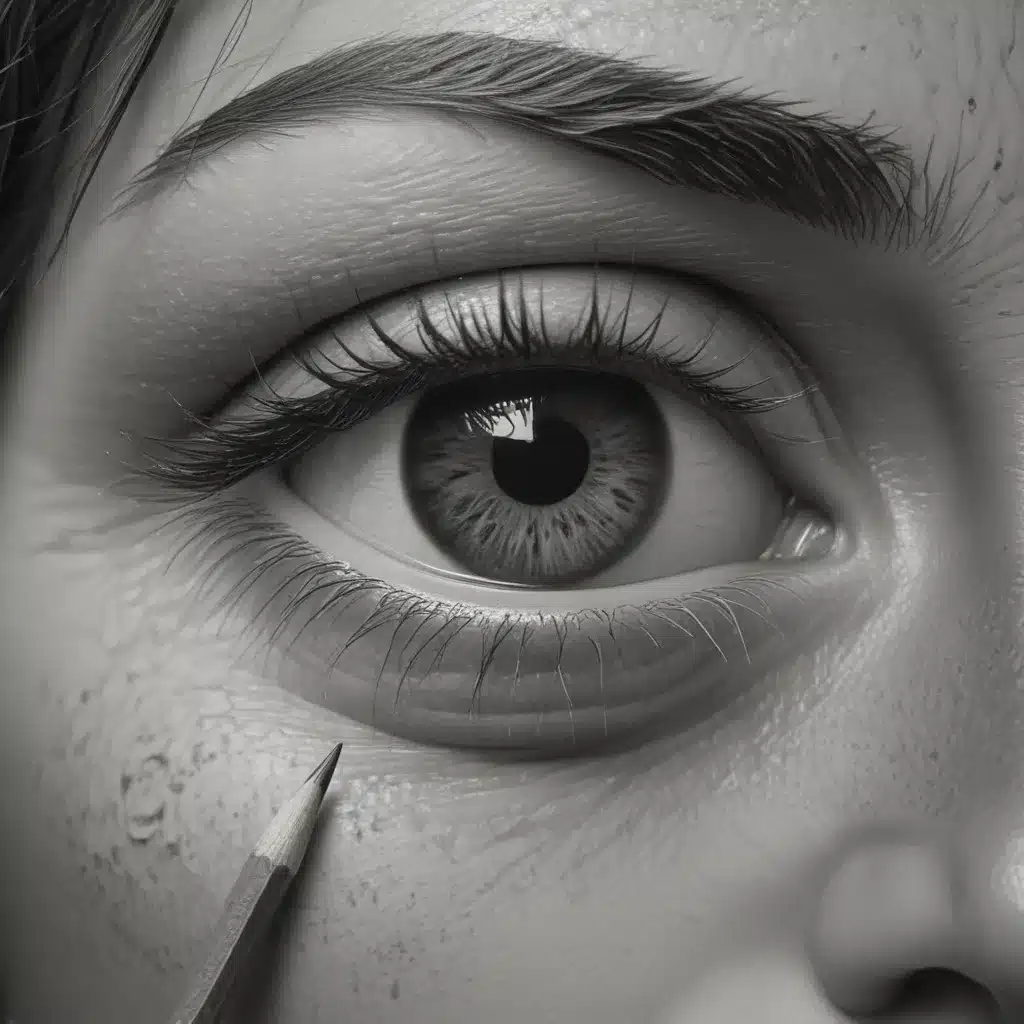
As an experienced art writer and creative consultant, I’ve had the privilege of exploring the captivating world of pencil drawing. From rendering lifelike textures to capturing intricate details, the medium of pencil offers artists a unique canvas for expressing their vision. In this comprehensive guide, we’ll delve into the techniques and principles that can elevate your pencil drawings to new heights, imbuing them with a sense of emotional impact that transcends mere realism.
Now, this might seem counterintuitive…
Mastering Pencil Rendering Techniques
The true power of pencil art lies in its versatility. By understanding the nuances of pencil rendering, you can unlock a world of possibilities. Let’s start with lifelike textures. Whether you’re depicting weathered skin, luscious fur, or the intricate patterns of feathers, the key is to pay meticulous attention to the interplay of light and shadow. Utilize a range of pencil strokes, from delicate hatching to rich, velvety shading, to simulate the natural undulations and imperfections that breathe life into your subject.
Mastering intricate details is another hallmark of exceptional pencil work. From the delicate filigree of lace to the intricate veins of a leaf, the pencil’s precision allows you to capture the most minute elements with stunning accuracy. Experiment with different pencil grades, from the crisp HB to the soft, dense 6B, to achieve the level of detail your subject demands. Remember, the devil is in the details, and it’s these subtle nuances that can elevate your drawings to the realm of true craftsmanship.
Of course, the pinnacle of pencil drawing is the pursuit of hyperrealistic realism. While some may argue that such precise renderings lack the personal touch of the artist, the sheer technical prowess required to achieve this level of visual fidelity is undeniably impressive. By mastering the interplay of light, shadow, and texture, you can create drawings that blur the line between reality and representation, captivating your audience and challenging their perceptions of what’s possible with a simple pencil.
Unleashing Emotional Impact
But pencil drawing is more than just a technical exercise; it’s a medium for artistic expression. The true power of pencil art lies in its ability to evoke emotion, to tell a story, and to connect with the viewer on a deeper level. It’s not just about rendering the physical appearance of your subject; it’s about capturing the essence of its being, the emotions that stir within it.
Take, for example, a pencil portrait of a weathered, elderly individual. With each delicate line and nuanced shade, you can convey a lifetime of experiences, the weight of years etched into the subject’s features. Or consider a pencil sketch of a majestic animal, its eyes burning with an untamed spirit that transcends the limitations of the page.
The creative process is where the true magic happens. It’s in the exploration of your subject, the intentional choices you make, and the way you infuse your own artistic vision that the emotional impact of your work is born. Embrace the meditative nature of pencil drawing, allowing your mind to wander and your intuition to guide your hand. Experiment with different techniques, from bold, expressive strokes to delicate, whisper-like details, until you find the perfect balance that resonates with your artistic voice.
Harnessing the Power of Composition and Color
No discussion of exceptional pencil drawing would be complete without exploring the principles of artistic design. After all, it’s the thoughtful application of these fundamental elements that can transform a merely technical exercise into a work of art that captivates the viewer.
Composition and framing play a crucial role in guiding the viewer’s eye and conveying your artistic intent. Consider the balance and symmetry of your drawing, strategically placing focal points and leveraging negative space to create a sense of harmony and depth. Experiment with different perspectives and angles, allowing your subject to occupy the frame in a way that amplifies its emotional resonance.
Color, even in the monochromatic realm of pencil drawing, can profoundly impact the overall mood and atmosphere of your work. Explore the interplay of warm and cool tones, using them to establish a sense of depth, highlight specific elements, and evoke emotional responses. Mastering the art of chiaroscuro, the dramatic play of light and shadow, can lend your pencil drawings a sense of drama and visual intrigue.
Embracing the Journey of Pencil Mastery
Becoming a true master of pencil drawing is a lifelong journey, one that requires dedication, patience, and a willingness to continuously push the boundaries of your own abilities. But the rewards are immeasurable, as you unlock the power to create pencil works that captivate, inspire, and leave a lasting impression on your audience.
Whether you’re an emerging artist or a seasoned professional, embrace the challenge of pencil drawing with an open mind and a thirst for exploration. Experiment with different techniques, seek out inspiration from the greats, and most importantly, trust your own artistic vision. For it is in the fusion of technical mastery and emotional expression that the true magic of pencil art is born.
I invite you to explore the endless possibilities of pencil drawing on Pencil and Paint Muse, where you’ll find a wealth of resources, tutorials, and creative insights to fuel your artistic journey. Together, let’s unlock the full potential of this timeless medium and elevate the art of pencil drawing to new heights.
Tip: Experiment with different media to discover your unique style